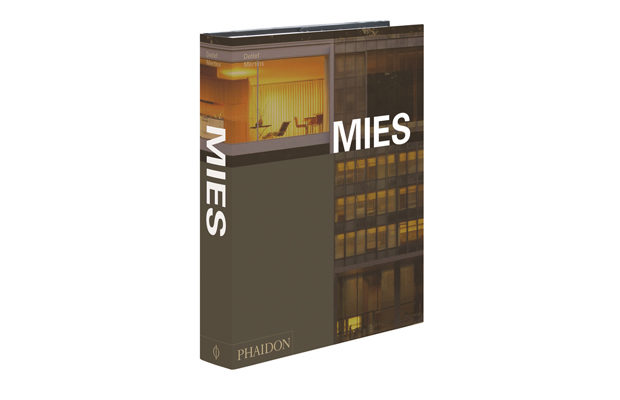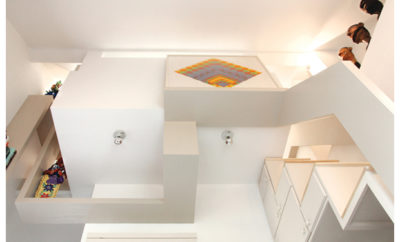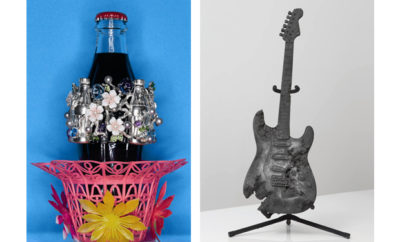 Mies by Detlef Mertins, recently published by Phaidon Press (phaidon.com).
Mies by Detlef Mertins, recently published by Phaidon Press (phaidon.com).
Feature
Mies: Modernism’s Master
A newly published book by the late Detlef Mertins considers the architect’s work, deeming it both progressive and conservative
The historian, architect, and university professor Detlef Mertins died in 2011 without seeing the publication of his long-nurtured book on Ludwig Mies van der Rohe. The book, now out from Phaidon Press, is the first full-blown study of the architect’s work, and it is a major opus. A noted scholar, Mertins focused on the history, philosophy, and theory of modernism in all its complexities. His scope was broad-reaching and accompanied by an all-encompassing grasp of the many cultural forces that feed architecture. In selecting the excerpt below, MODERN Magazine pays homage to Mertins’s brilliant mind and his final work, entitled simply Mies.
“Heralded in his lifetime as the heroic inventor of the all-glass skyscraper—the genie behind the curtain wall, master of modularity, philosopher of perfection—Ludwig Mies van der Rohe (1886–1969) became, for critics of modernism, the destroyer of familiar traditions and the architect of cold technology and faceless bureaucracy. He had been attacked by conservatives throughout his life, but beginning in the 1970s, a younger generation of progressive architects and critics sought to define themselves in opposition to him. He was called boring, anti-historical and authoritarian. Urbanists riled against the destruction of the traditional city and the endless proliferation of neutral glass boxes for which he seemed to stand. Having been cast as a leader of the “International Style,” Mies was later held responsible for creating the universalizing modernism carried by his followers into the corporate boardrooms of America and disseminated from there to the far reaches of the globe. For social critics the spacious elegance and material sumptuousness of Mies’s buildings were no longer appreciated for redeeming instrumental rationality but were seen to aestheticize the alienation, exploitation and dehumanization of mass society.

Mies van der Rohe in a 1957 photograph for Life.
Yet Mies gradually re-emerged, and by the turn of the millennium he was widely celebrated once more, not only as a looming figure of the twentieth century but also as an active presence in contemporary architectural culture….
Having defined modernism of the post-World War II period more than any other architect, Mies served to inspire a renewal of modernity after postmodernism and was in turn reborn through it. Like this new modernity, Mies has become more complex and contradictory, less black or white; in fact he now appears both black and white, dark and light, complicit and resistant, classical and modern, ordinary and extraordinary. Today it is possible to see him as part of an alternative stream within modernism….
Cast initially as a simple story of development from experimental beginnings to monuments of a new paradigm, today this linear narrative must be recognized as self-construction and self-fulfilling prophecy, based on native confidence and a knack for publicity. Not withstanding Mies’s goals and desires, his career was in fact marked by discontinuities and struggles as much as continuities and success. In retrospect, its trajectory was less inexorable and more contingent upon changing contexts, challenges, clients and collaborators….
At the same time, Mies’s oeuvre now appears more relentlessly experimental, even as the architect was driven to monumentality. His works are, he once said, both progressive and conservative. They are monumental experiments and experimental monuments. If it turns out that his oeuvre was more formally disparate than previously acknowledged, it nevertheless holds together—perhaps even more strongly—as a sustained quest: a lifelong effort to forge a new architecture that would be adequate to the evolving history of modernization and the philosophical and cultural challenges it raised. In an interview Mies recalled how, as a young man, he had asked colleagues what architecture was and how it could reasonably relate to a world that was equally difficult to grasp. Not receiving an answer, he embarked on his own path. It was a good question—perhaps the question—to be asked, and he answered it over and over again, each time differently: sometimes a little differently, sometimes a lot. From the beginning of his career to the end, he longed for the guidance of a comprehensive worldview….

New National Gallery, Berlin, 1962–1968.
Rejecting “any aesthetic speculation, any doctrine, and any formalism,” Mies declared in 1923 that architecture was “the spatially apprehended will of the epoch. Alive. Changing. New.” A few years later, he was even more explicit in his vitalist realism: “Life is what matters. In its entire fullness, in its spiritual and concrete interconnections…We want to open ourselves to life and seize it.” He focused his prodigious talents and a penchant for large-scale drawings and model-making on clarifying and monumentalizing the emergent building types of modern society by developing a new language that married elemental geometry with new materials and modes of construction in steel, glass and concrete. His work on emergent building types—the open plan house, central core office tower, and apartment block—and modern structural types—the high-rise skeleton frame, low-rise repeated bay frame, and long-span structure—has often been taken for granted or overlooked but is crucial to understanding the terms of his engagement with social modernity. His dazzling Glass Skyscraper (1921–2) was the first high-rise tower to be conceived as entirely clad in glass; his robust Concrete Office Building (1923) provided well-lit and flexible space for what was then a new function—the modern office; and his organic Concrete Country House (1923) and Brick Country House (1924) offered unprecedented spatial fluidity and continuity between house and garden to support new ways of living as much outside as in. With a combination of economy and grand vision, as we shall see, these projects exploited the potentials of new technologies and spatial organizations to open a new landscape.

Farnsworth House, Plano, Illinois, 1945–1951.
Yet Mies went further: he elevated these emergent types to self reflexive forms, enlarged them in scale, and used them (at least implicitly) to represent a modern cosmology that was scientific in character, just as monumental architectures of the past had represented the cosmologies of their time. Many of his later built works would be equally celebrated, and a remarkable number would achieve paradigmatic status: most notably the Barcelona Pavilion (1928–9), T=ugendhat House (1929–31), Farnsworth House (1945–51), 860–880 Lakeshore Drive (1945–51), RS Crown Hall (1950–6), Seagram Building (1954–8) and New National Gallery, Berlin (1962–8). Each offered a new Gestalt and a new symbol of history-in-the-making. Like a worldview or world-image, each clarified potentials immanent in the world and offered an orientation and guide for going beyond what was given to live life large….
Mies accepted the defining traits of modernity and insisted on returning to their origins. He did not return those traits to any false premodern purity but instead elevated them to a higher level of maturity, expression and consciousness. In seeking to provide orientation in the new world, his architecture belongs to, rather than stands apart from, the modern age.“












